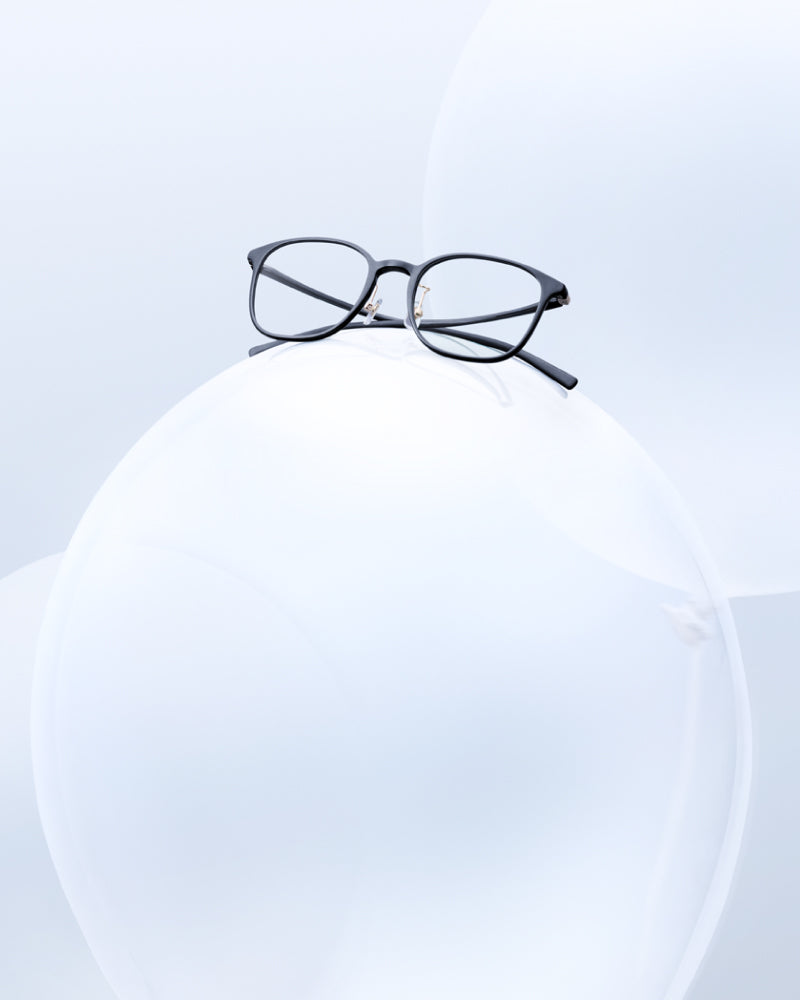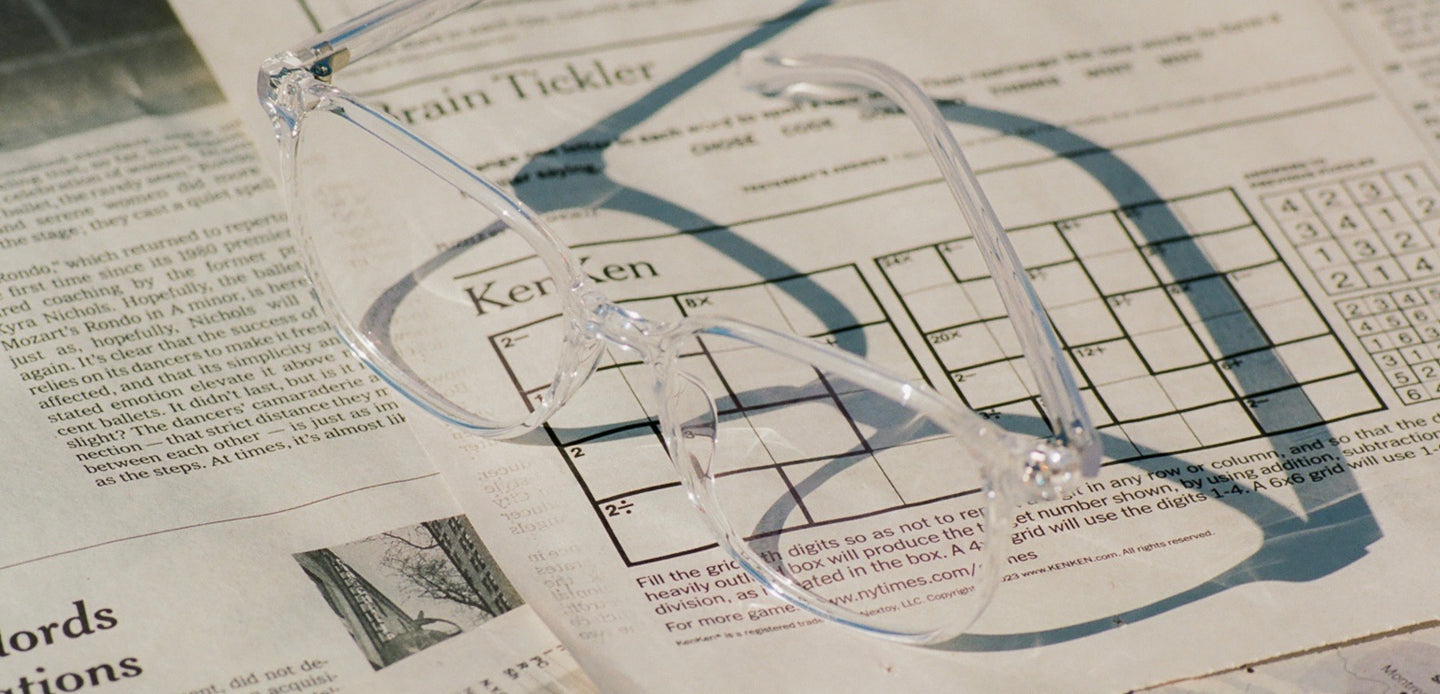Whether you're shopping for glasses online or in person, you want to find a stylish pair with the most comfortable fit. As you shop, you'll notice a series of numbers on the JINS website or printed on the frame. These numerals indicate the glasses' measurements and can guide your decisions when comparing frames—especially if you're comparing against a pair you already wear and find comfortable. Here's what you need to know about measuring your eyeglass size.
Understanding the Frames' Dimensions
Knowing the frames' dimensions will make it easier to find a flattering pair of glasses that won't irritate pressure points and cause tension headaches. You can find this information on the temple arm of any pair of glasses. The temple arm is the part that is screwed to the main body of the frame and rests behind the ear.

Each measurement is presented in millimeters and separated with a dash or small icon:
- Lens width: The first number in the sequence indicates the lens's horizontal diameter or width from the widest point.
- Bridge width: The middle number refers to the bridge's width or the metal or plastic component that crosses the nose to connect the lenses.
- Temple length: The third number is the length of the temple arm.
- Lens height: JINS includes a fourth number in the sequence, which refers to the lens height or the tallest point from the top to bottom of the lens.
In addition to the individual lens width, JINS provides the overall frame width on each product page. This measurement gives you helpful context when trying on frames virtually or in person. If you like how a specific pair looks and feels, the overall width can help you find similar styles.

Here's how JINS categorizes overall frame widths, so you can use the site filters to shop for the perfect fit:
- Extra-Narrow: 100-126.9mm
- Narrow: 127-130.9mm
- Medium: 131-139.9mm
- Wide: 140-143.9mm
- Extra-Wide: 144-180mm
Consider Width and Face Shape
The overall frame width also matters because it determines whether a pair of glasses is truly proportionate to your face. How glasses look and feel can be related, which means you have to consider your individual face shape in addition to the written measurements. For instance, frames that are too narrow could make a round or heart-shaped face look wider and may even create pressure at the temples. Oversized frames might look too wide and overwhelm a slender face and feel heavy to wear.
Make sure the frame width doesn't extend too far past your temples—you should only be able to fit one finger at most between your face and the beginning of the temple arm. Otherwise, the glasses are too wide and won't stay put.
Lens height can also influence whether glasses look proportionate and feel comfortable. The frames' top line should be similar to your eyebrow shape, and your brows shouldn't be visible through the lenses. If they are, the lenses might be too tall, which reduces the sense of balance between the glasses and your facial features. The bottom of the frame should rest above the cheeks for the most comfortable fit.
How Lens Thickness Can Affect Fit
Lens thickness is based on the strength of the prescription. Individuals with stronger prescriptions generally need thicker frames, though many eyeglass makers can now create lighter, thinner lenses for high-index prescriptions.
Why are lenses with stronger prescriptions thicker? The refractive index measures how much the light path bends as it travels through the lenses. To correct refractive errors, the lenses must be thicker to allow the light direction to bend and reach the eye properly.
The higher the frames' lens width, the thicker the lenses must be. But thick lenses can make glasses heavy and uncomfortable. The weight could also cause the frames to slide down the nose. That's why it's best to stick with a lens width of fewer than 50 mm when the prescription is +/-6.00.
The lens height is a crucial eyeglass measurement for bifocal and progressive lens wearers. A lens height of at least 30 mm is large enough to ensure each part of the lens can accommodate each field of vision in the range.
Taking Measurements With a Current Pair
If you already own a pair of glasses with a comfortable fit, refer to the measurements on the temple arm when shopping for a new pair of glasses. If you can't find or read the numbers, don't stress. All you need is a millimeter ruler. Measure the lens height and width, bridge, temple arms, and frame width of the frames you currently wear.
There is some flexibility, especially if you're shopping for a similar shape or style. The bridge width can be within 2 mm of your current frames and still provide a proper fit. All other measurements can be within 2 to 3 mm of the corresponding dimension on the frames you already have.
Now that you know how easy finding the perfect pair can be, check out our selection of stylish eyeglasses for men and women. Our collections are categorized by fit, and you can filter the frames based on size and shape to find exactly what you're looking for.


















